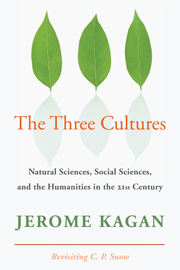3 - Social Sciences 1
Published online by Cambridge University Press: 07 August 2009
Summary
The social science communities – psychologists, linguists, sociologists, anthropologists, political scientists, and economists – can be divided, albeit roughly, between those allied with the natural sciences who prefer to study qualities with biological origins or correlates and those more interested in the characteristics that are established and changed by social conditions. Although the latter are reluctant to acknowledge the influences of biology, one senior American demographer confessed regret over his past indifference to the biological side of human nature. Anthropologists, the primary source of information on human nature in the nineteenth century, now represent a bridge to both the other social sciences and biology, for they study both the evolution as well as the cultural variation in values, rituals, practices, languages, and myths. I devote two chapters to the social sciences because their assumptions and claims are more controversial than those of the natural sciences. This chapter considers the investigators who study the individual or small groups; the next chapter deals with the political scientists and economists who study relations among institutions, societies, and nations.
SYMBOLS AND CULTURE
Symbol and culture are two central concepts for those who study human behavior, thought, belief, and emotion, as fundamental as mass and energy in physics, atom and molecule in chemistry, gene and cell in biology. A symbol is any event – a color, design, spatial location, animal, object, or word – whose physical features bear no relation to the idea it represents.
- Type
- Chapter
- Information
- The Three CulturesNatural Sciences, Social Sciences, and the Humanities in the 21st Century, pp. 104 - 167Publisher: Cambridge University PressPrint publication year: 2009

